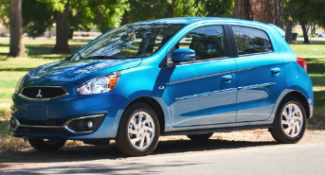
2020 Mitsubishi Mirage In-Depth Photos
Check out the 2020 Mitsubishi Mirage from every angle, including interior and exterior photos.

Check out the 2020 Mitsubishi Mirage from every angle, including interior and exterior photos.

The 2020 Mitsubishi Mirage lags other subcompact cars in safety technology and comfort, but offers a low starting price and a generous standard warranty.